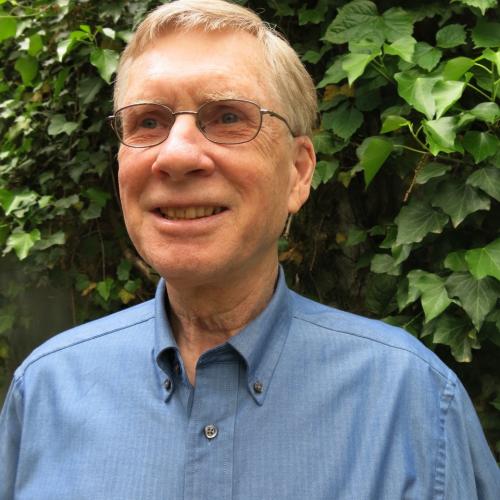The Architecture of Community
By Léon Krier, edited by Dhiru A. Thadani and Peter J. Hetzel
Island Press, 2009, 484 pp., $34.95 hardcover
If you’ve never read Léon Krier, you’ve missed a tremendous pleasure. Krier, the Luxembourg-born architect who has sometimes been called the intellectual godfather of New Urbanism, may be the world’s funniest living architectural theorist. He can be delightfully droll while making deadly serious points. For years his clever cartoons, especially, have alerted audiences to the silliness of many contemporary architectural fashions.
Several years ago, Washington, DC, architect Dhiru Thadani realized that Krier’s writings needed to be brought together, expanded or updated in some instances, and published as a single book. The joyful result is The Architecture of Community, a profusely illustrated volume that lays out Krier’s thoughts on how buildings and communities should be designed and constructed.
I’m sure many critics regard Krier as an anachronism. He argues that there’s no need for buildings to be more than a few stories high. He sees no point in pursuing the zeitgeist. The proper role of architecture, in Krier’s view, is to uphold and strengthen the character of particular places, not chase after that modernist will o’ the wisp, the “spirit of the age.”
Born in 1946, Krier came by his love of tradition naturally. “I grew up in an environment that, despite two recent world wars, was unblemished by modernist architecture and planning,” Krier remembers. “Until the mid-1960s, Luxembourg was a miracle of traditional architecture, a small capital city of 70,000 souls, embedded in manicured agricultural and horticultural landscapes and lofty beach [beech] forests. … My father’s tailoring workshop occupied the ground floor of the townhouse, and for my primary education I hopped across the street when hearing the school bells chime from our garden.”
“My mother’s piano playing filled the house, and during holidays my parents took us four children to Switzerland, France, and Italy to visit places of beauty.” But he came upon modernist visions in books by Le Corbusier, Giedion, and Gropius. “The formidable promise expressed there had swollen my sails,” he says. Thus, in the summer of 1963, he took his parents to see Le Corbusier’s Cité Radieuse in Marseille. When, after enjoying beautifully intact old towns and landscapes nearby, the family encountered the “tawdry reality” of Corbu’s creation, “we were all speechless with shock,” Krier recalls. “Though I didn’t realize it immediately, my life’s orientation became defined by that visit.”
Civility of place
In these pages Krier presents a philosophy of civilized and soul-nurturing settings — through short, vivid sections of text, pithy cartoons, and lovely drawings. Occasional misspellings and foreign words and the sometimes less than fully explained photos of his buildings only accentuate the sense that here is a product of genius.
From his close study of European settlements, Krier has concluded that communities can appropriately be organized through either of two geometric systems — organic, irregular pattern-making, which Krier calls “vernacular networking,” or artificially imposed straight lines, which Krier calls “classical networking.” He sees organic planning as more practical and beneficial than is generally recognized. In Poundbury, a demonstration project for Prince Charles in southwest England, there are extremely irregular streets, which form convivial urban spaces and “induce spontaneously civilized behavior from car drivers — without the help of ubiquitous traffic gadgetry,” he points out.
Krier repeatedly returns to what he sees as the need for tradition — in architecture, materials, town-building, and other realms. “Today,” he says, “one truth is evident: without traditional landscapes, cities, and values our environment would be a nightmare on a global scale.”
Modernists often complain about resistance from authorities or from a stodgy populace. “Modernity that augments daily comforts finds broad acceptance,” Krier shoots back, citing the popularity of modern vehicles and machines. He rejects the idea that most people lack aesthetic appreciation. On the contrary, according to Krier, “humanity’s aesthetic sense is as natural and universal a gift as the capacities of speech, motion, and reproduction.”
He doesn’t deny that many traditional-style buildings from recent decades have “the aura of the fake, the ersatz, the surrogate.” He blames this failing at least partly on synthetic construction materials, and asserts that the situation is destined to improve, because those substances — including plate glass, glues, nails, and steel-reinforced concretes — depend on fossil fuels, which will in time become too expensive, leading us back to using “authentic” materials. If he’s right, we’re in for a wrenching transition.
Much as I admire Krier, I have never understood how a world rapidly heading toward a population of 7 billion can do without high-rises or fit a massive contemporary workforce into neighborhood-scale buildings. Nor do I see most Americans being eager to live in the tight villages that Europe historically produced. To me, Krier’s book is not entirely persuasive. But he gets many things right, and if our energy-profligate economy implodes, Krier’s vision will look extraordinarily prescient.




